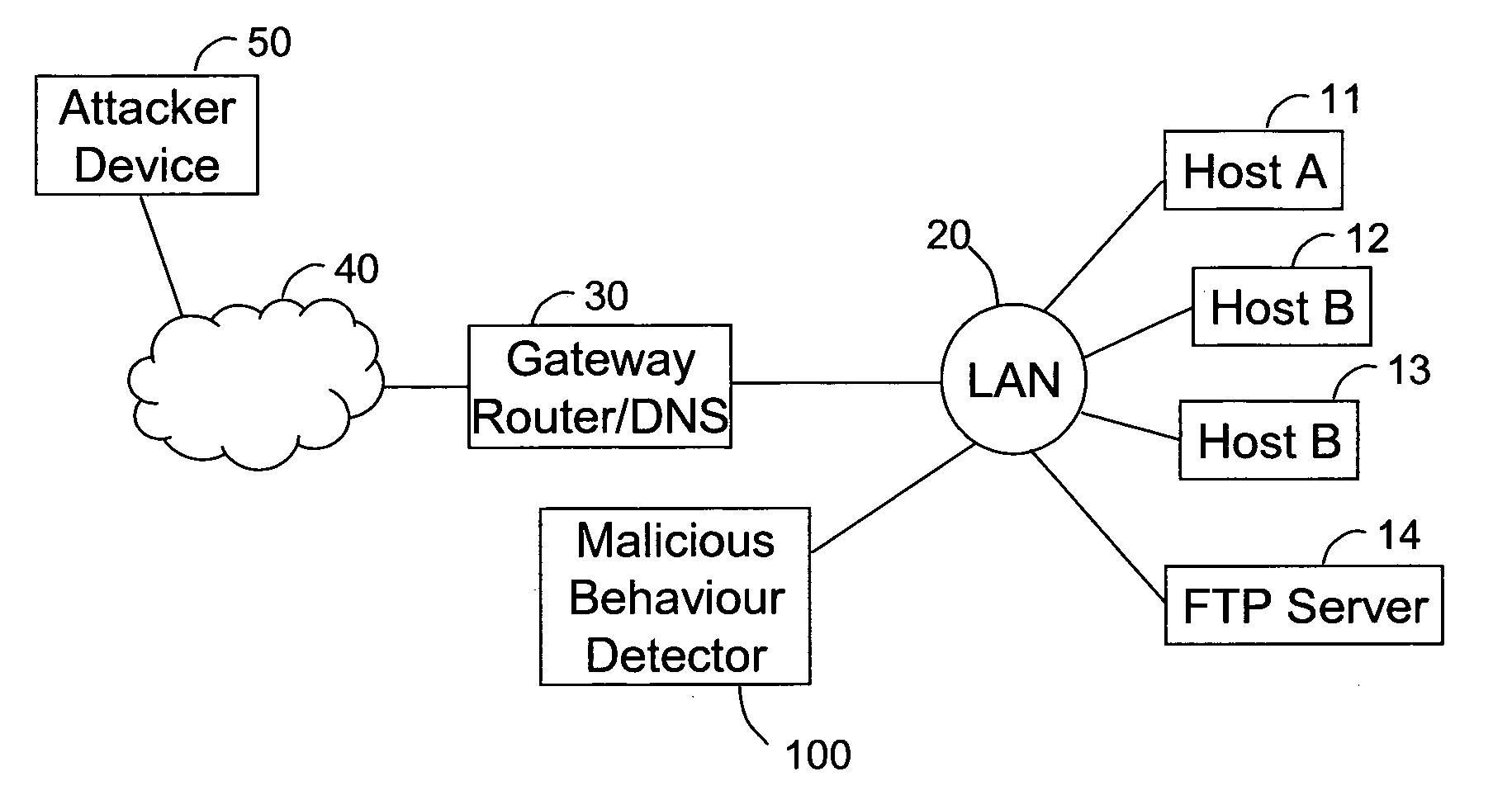Detecting malicious behaviour on a computer network
a computer network and malicious behaviour technology, applied in the field of malicious behaviour detection on the computer network, can solve the problems of significant amount of malicious behaviour over the internet today, and the analysis of dns requests is not considered to be a very reliable approach on its own, so as to improve the chance of malicious code being successfully run, reduce the risk of accidental false positives, and improve the effect of detection efficiency
- Summary
- Abstract
- Description
- Claims
- Application Information
AI Technical Summary
Benefits of technology
Problems solved by technology
Method used
Image
Examples
Embodiment Construction
[0026]FIG. 1 illustrates a typical network architecture comprising a Local Area Network (LAN) 20 (e.g. an IEEE 802.3 Ethernet LAN) connected, via a gateway / router device 30 (which also acts as a proxy DNS server in the present embodiment) to the Internet 40. Connected to the Internet 40 is an attacker device 50 (which might for example be an infected device) where a worm is trying to spread to a new victim. Also attached to the LAN 20 are several host devices 11-14, one of which 14 is running an FTP server and is the current target of the attacker device 50.
[0027]The LAN 20 also has connected to it a Malicious Behaviour Detector device (MBD) 100 which is the principal subject of the present embodiment, and it is schematically illustrated in greater detail in FIG. 2. Referring now to FIG. 2 therefore, the MBD 100 comprises an interface 110 for communicating with the LAN 20, a processor unit 120 for performing processing functions and a memory 130. The processor unit 120 co-operates w...
PUM
 Login to View More
Login to View More Abstract
Description
Claims
Application Information
 Login to View More
Login to View More - R&D
- Intellectual Property
- Life Sciences
- Materials
- Tech Scout
- Unparalleled Data Quality
- Higher Quality Content
- 60% Fewer Hallucinations
Browse by: Latest US Patents, China's latest patents, Technical Efficacy Thesaurus, Application Domain, Technology Topic, Popular Technical Reports.
© 2025 PatSnap. All rights reserved.Legal|Privacy policy|Modern Slavery Act Transparency Statement|Sitemap|About US| Contact US: help@patsnap.com



